ViewSonic VP2771 Professional Monitor Review
Why you can trust Tom's Hardware
Color Gamut & Luminance
For details on our color gamut testing and volume calculations, please click here.
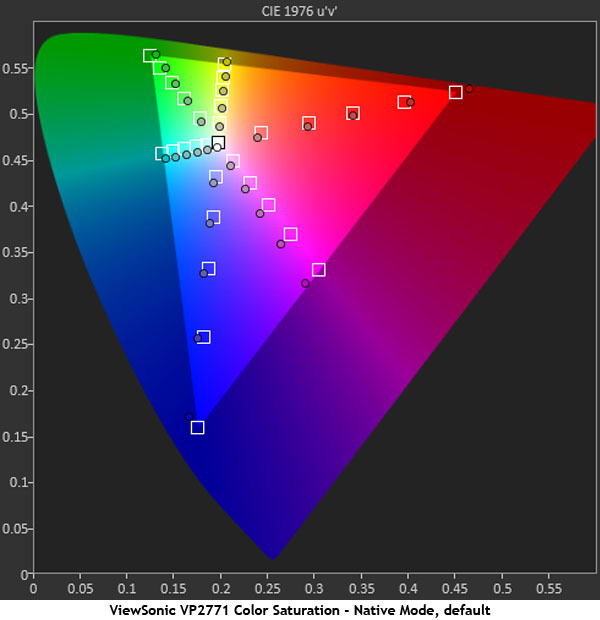
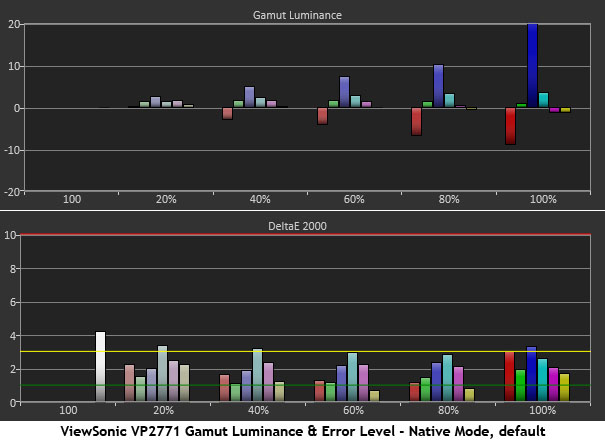
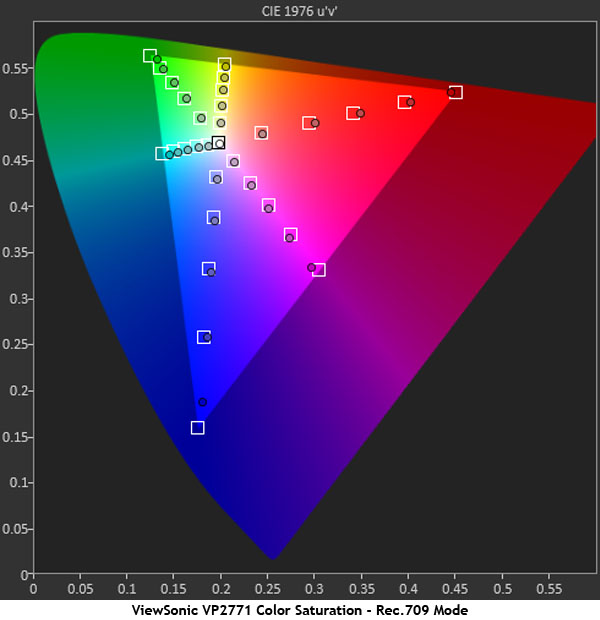
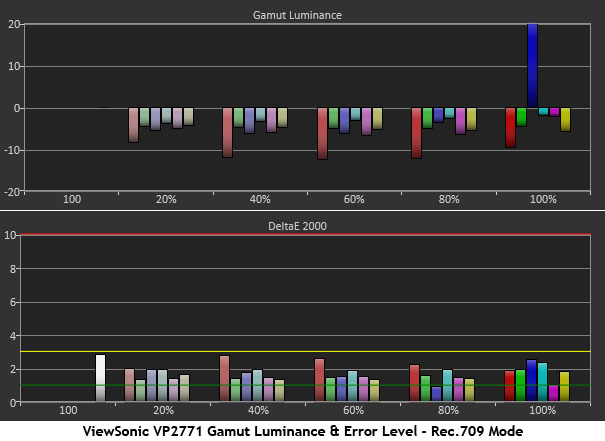
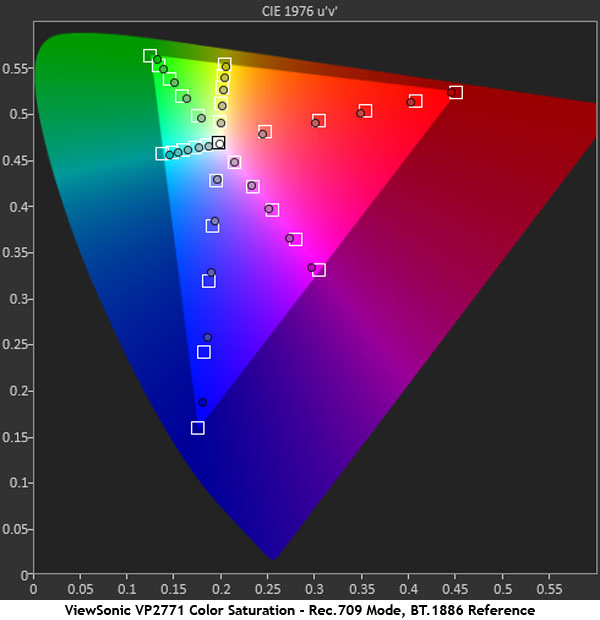
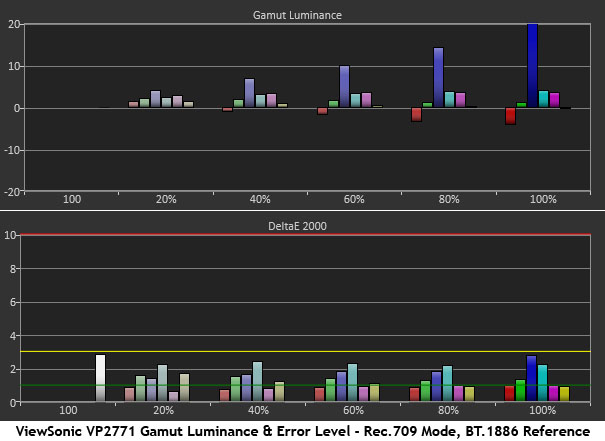
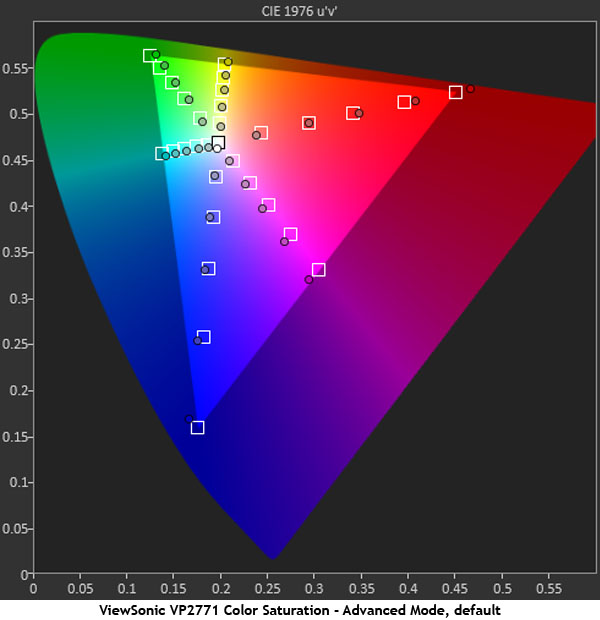
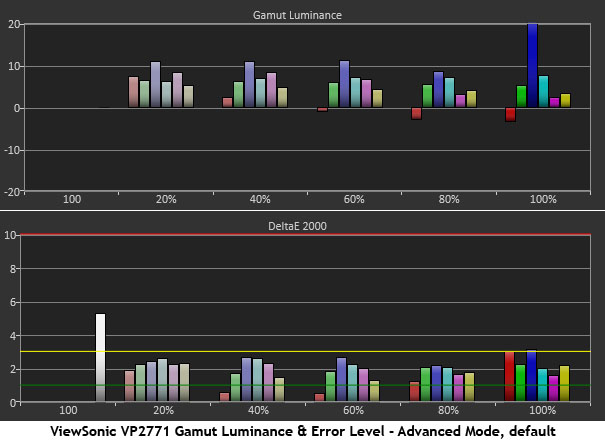
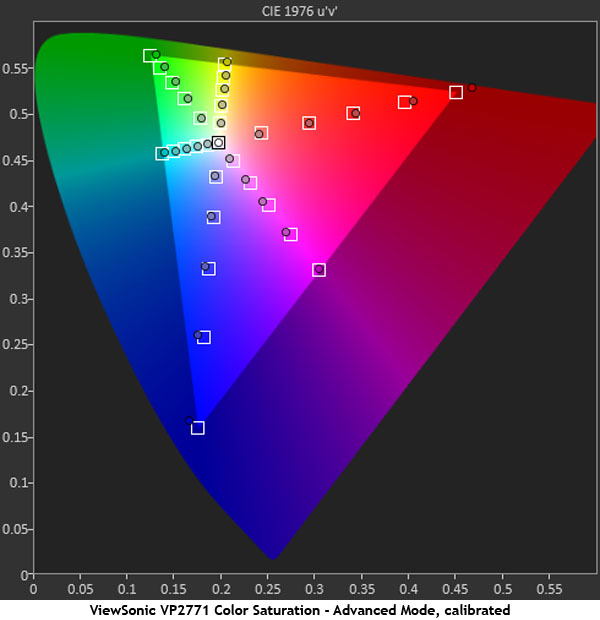
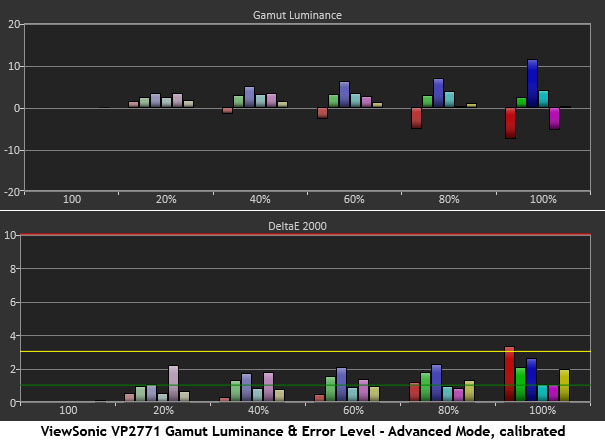
Based on our color saturation and luminance measurements, we’d gladly choose the Rec.709 mode as the go-to preset for those who don’t plan to calibrate. It’s not perfect, but aside from a slight under-saturation in the blue primary, it tracks pretty well. Most color points are on target, and luminance levels are properly balanced. And when measured against the BT.1886 gamma reference, it looks even better.
In the Advanced Mode, there is a bit of correction needed in the magenta secondary. Fortunately, the VP2771’s hue controls have enough precision to accomplish this. The only flaw is a little bonus red saturation. We tried to fix it with the adjustment slider but succeeded in only in reducing luminance, which we didn’t want. In the end though, we’re pretty happy with the results. If you use Colorbration, you’ll see similar results, but our manual adjustments generate the lowest error levels.
Comparisons
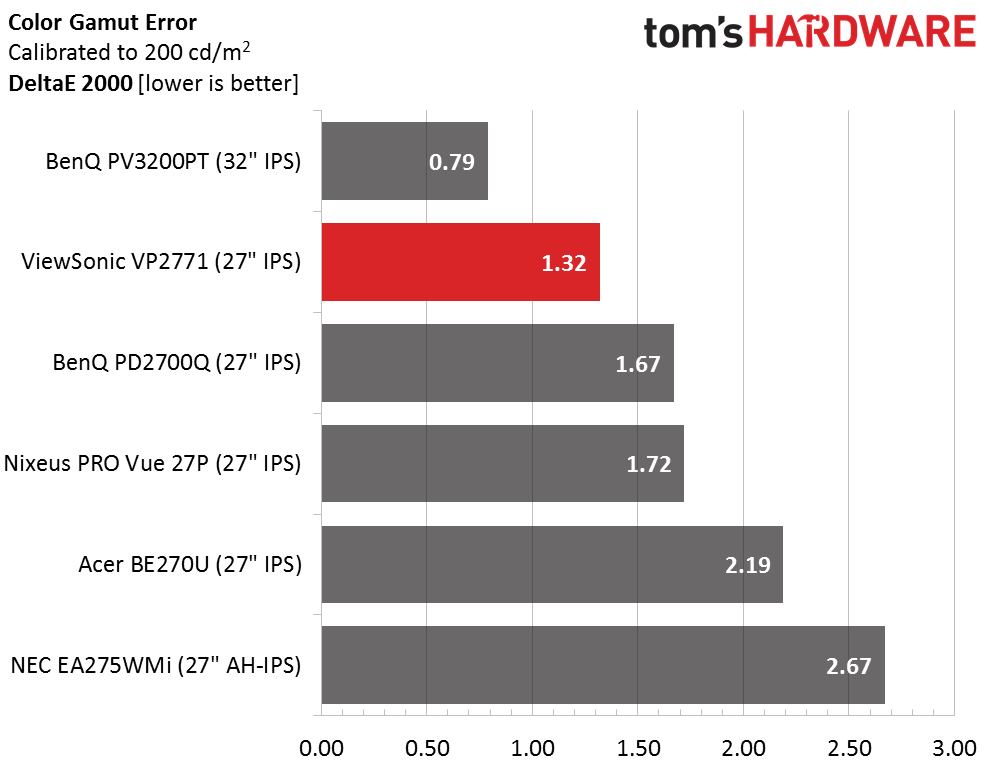
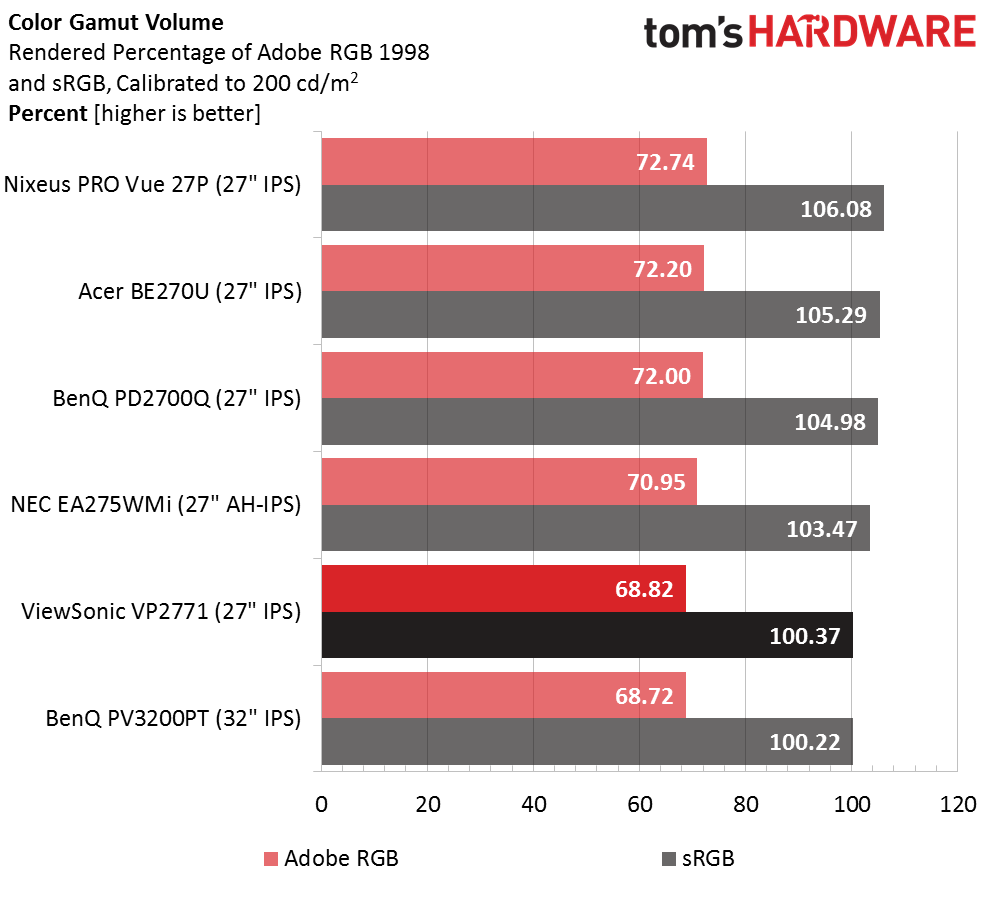
We think every professional monitor should be able to achieve an average color error under 1dE. Not all can manage it, however, and we’ll give the VP2771 a little leeway because it sells for less than much of its competition. 1.32dE is perfectly respectable performance. Out of the box, we recorded 2.15dE in Native mode and 1.81dE in the Rec.709 preset, which meets the factory data included with our sample. The best we could do with Colorbration was 1.79dE. So if you have the gear, we recommend a manual calibration. It’s a bit more work, but you will unlock the VP2771’s full performance potential.
Gamut volume hits 100% sRGB almost perfectly. There are enough slight errors that we still recommend a custom profile, but the VP2771 is well suited for color-critical applications.
MORE: Best Gaming Monitors
MORE: Best Professional Monitors
Get Tom's Hardware's best news and in-depth reviews, straight to your inbox.
MORE: How We Test Monitors
MORE: How To Choose A Monitor
MORE: All Monitor Content
Current page: Color Gamut & Luminance
Prev Page Gamma Response Next Page Viewing Angles, Uniformity, Response & Lag
Christian Eberle is a Contributing Editor for Tom's Hardware US. He's a veteran reviewer of A/V equipment, specializing in monitors. Christian began his obsession with tech when he built his first PC in 1991, a 286 running DOS 3.0 at a blazing 12MHz. In 2006, he undertook training from the Imaging Science Foundation in video calibration and testing and thus started a passion for precise imaging that persists to this day. He is also a professional musician with a degree from the New England Conservatory as a classical bassoonist which he used to good effect as a performer with the West Point Army Band from 1987 to 2013. He enjoys watching movies and listening to high-end audio in his custom-built home theater and can be seen riding trails near his home on a race-ready ICE VTX recumbent trike. Christian enjoys the endless summer in Florida where he lives with his wife and Chihuahua and plays with orchestras around the state.
-
milkod2001 Enjoying my $300 Qnix 1440p monitor for last 3years. Now i see the same specs monitor maybe slightly better colours out of the box for $499... NO Quantum Dot, tech, NO HDR, No Qsync/Free Sync2 nothing. NO sale for me, sorry.Reply